In July, my Spiderbeam mast was sideswiped by the winds from a thunderstorm that took out the mast and put an abrupt end to my Spiderbeam – a great antenna I’ve enjoyed for several years. Someday I plan to replace the Spiderbeam once I have a location I can erect a tower. In the meantime, I wanted a decent DX antenna I can use while I’m developing my new multi-band antennas to continue operating. I ended up choosing the GAP Titan DX antenna.
I chose the GAP Titan as it’s received overall positive reviews and has been in use for decades. I wanted a vertical antenna with low angle radiation for DX, ideally, one that didn’t require a large radial field, and the Titan looked like it filled the bill. I have an OCF dipole that supports 80, 40, 20 and other bands via tuning, but other than 40 meters it seems like yet another compromise multiband antenna, except on 40.
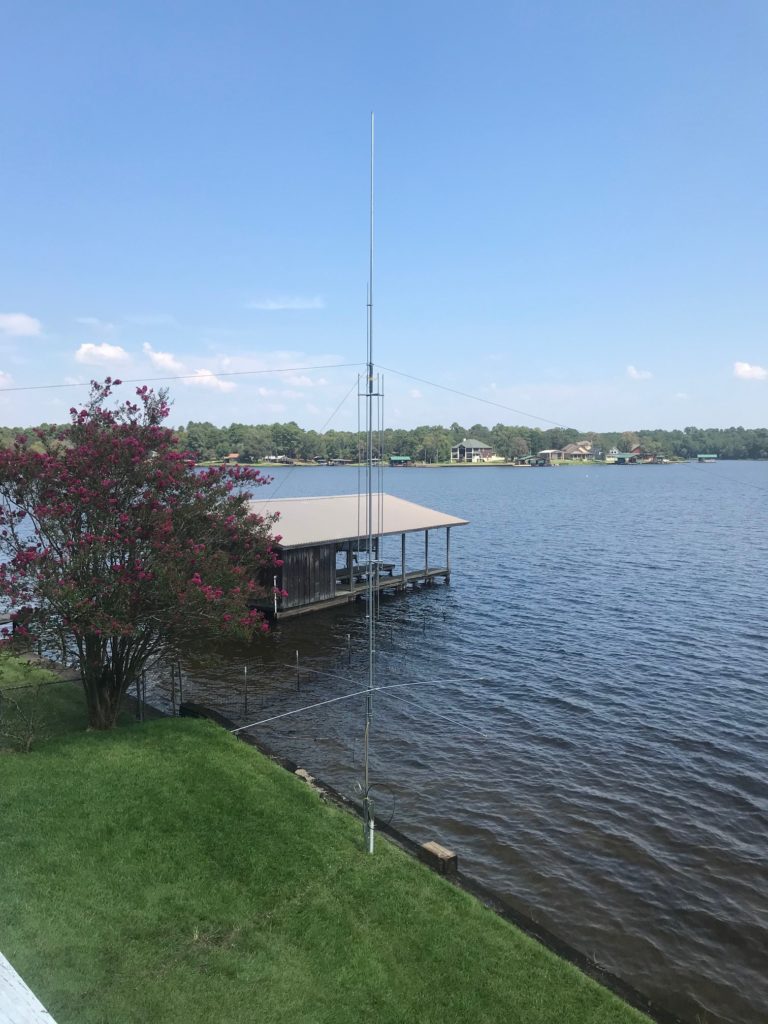
The Titan DX is installed at the water’s edge, as can be seen above. It’s mounted about 5′ above ground level. The 40 meters counterpoise aluminum spreaders can be seen toward the very bottom of the antenna. Above that, the various tuning elements for the various bands are gathered around the middle of the antenna. The topmost vertical element sticks up above the top edge of the picture. The entire antenna system is about 38′ tall. At the bottom, it’s mounted on a vertical tilt plate that makes working on the antenna easier to deal with, should that be required in the future.
It took me about 4 hours to build the antenna by myself, and only about 20 minutes to get it mounted and erected, with several helpers. The instructions were okay but not great. Fortunately, there’s a nice community with lots of advice available for GAP antenna owners, which I made full use of.
After correcting one error I made during the construction of the counterpoise, I was delighted to see the VSWR’s were as advertised. I’m including images of those VSWR readings below (so I have a place to track them for future reference).
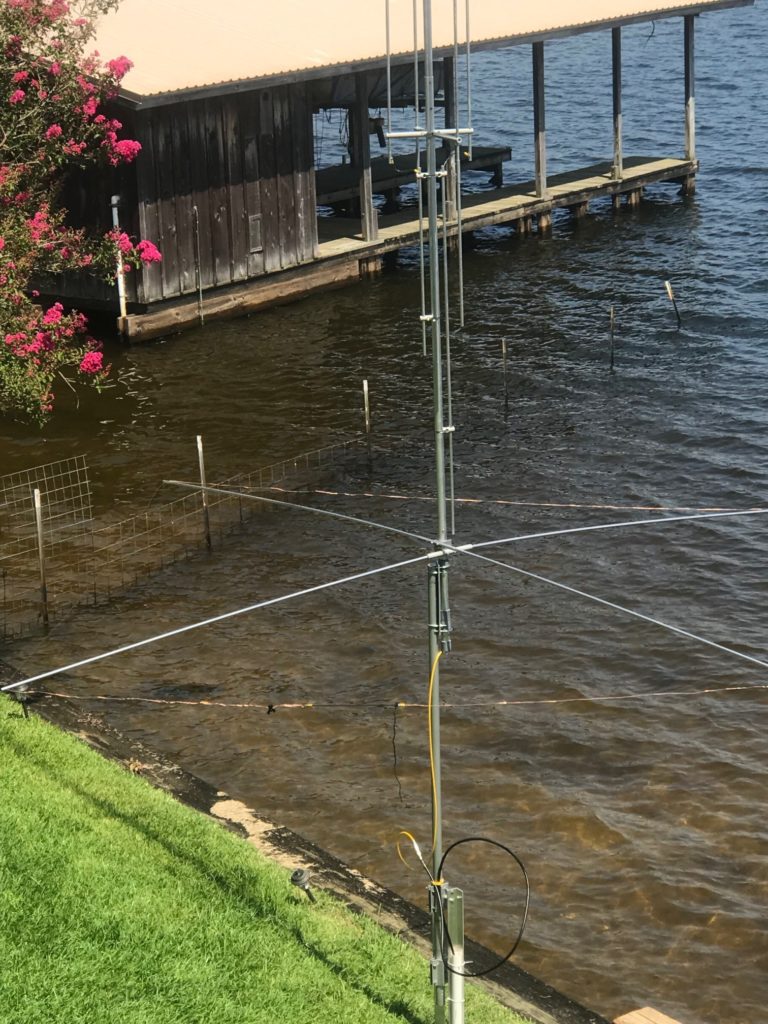
If I had it to do over again, I would’ve applied Penetrox to all of the aluminum joints to improve their connectivity. However, given the VSWR readings, it appears the RF connections are all just fine without it.
Early testing results on the bands which are active have been okay to excellent. Of course, I’m typically running some power, too, so that always helps. I will post more specific results once I’ve had the antenna operational for some time. Note these antenna readings are on the other end of a 100′ coax cable (LMR 400).
Clearly, there’s further tuning and optimization that can be done on a few of these bands… an exercise for another day perhaps. For now, the out of the box VSWR’s are good enough to operate without a tuner.


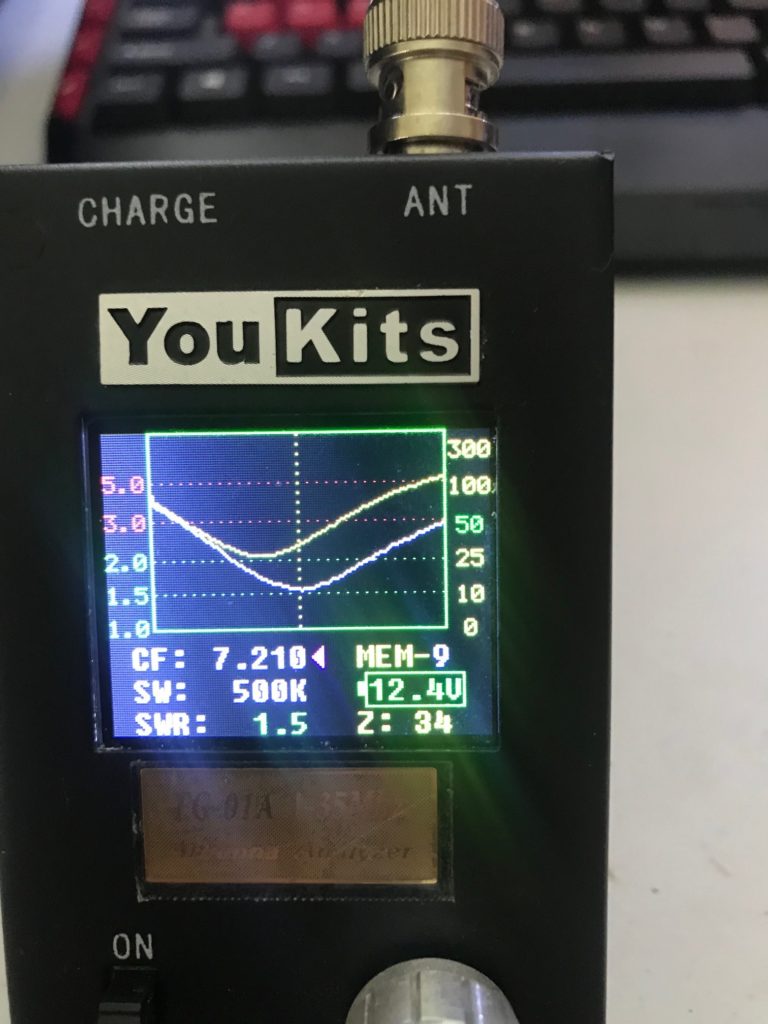
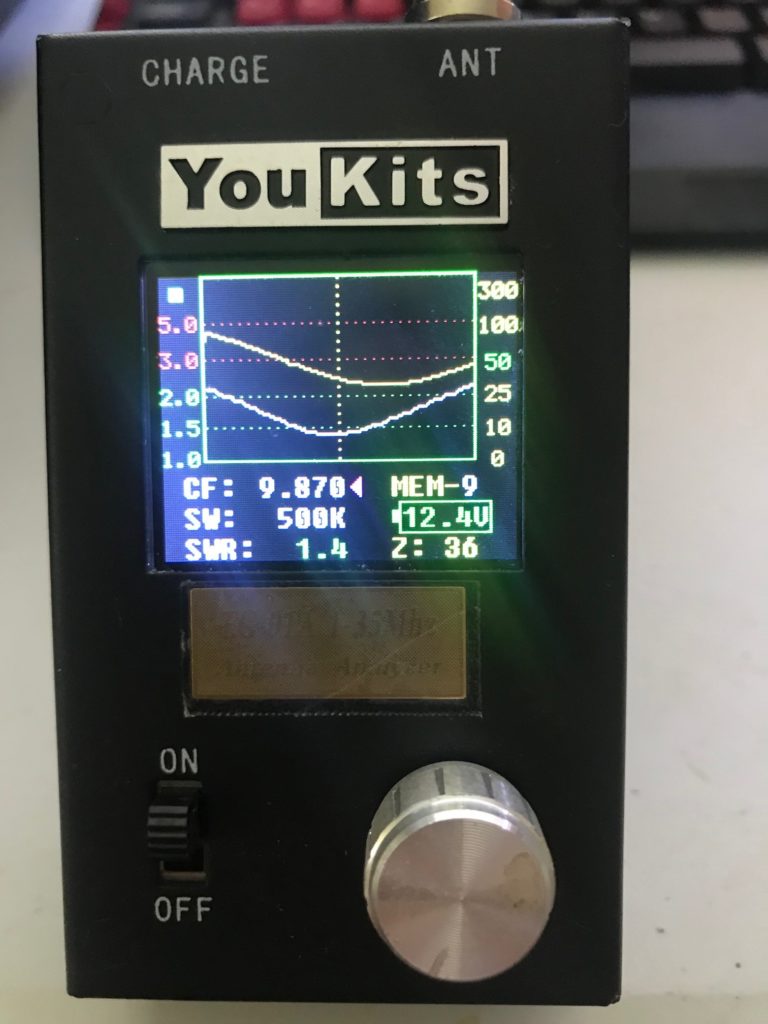
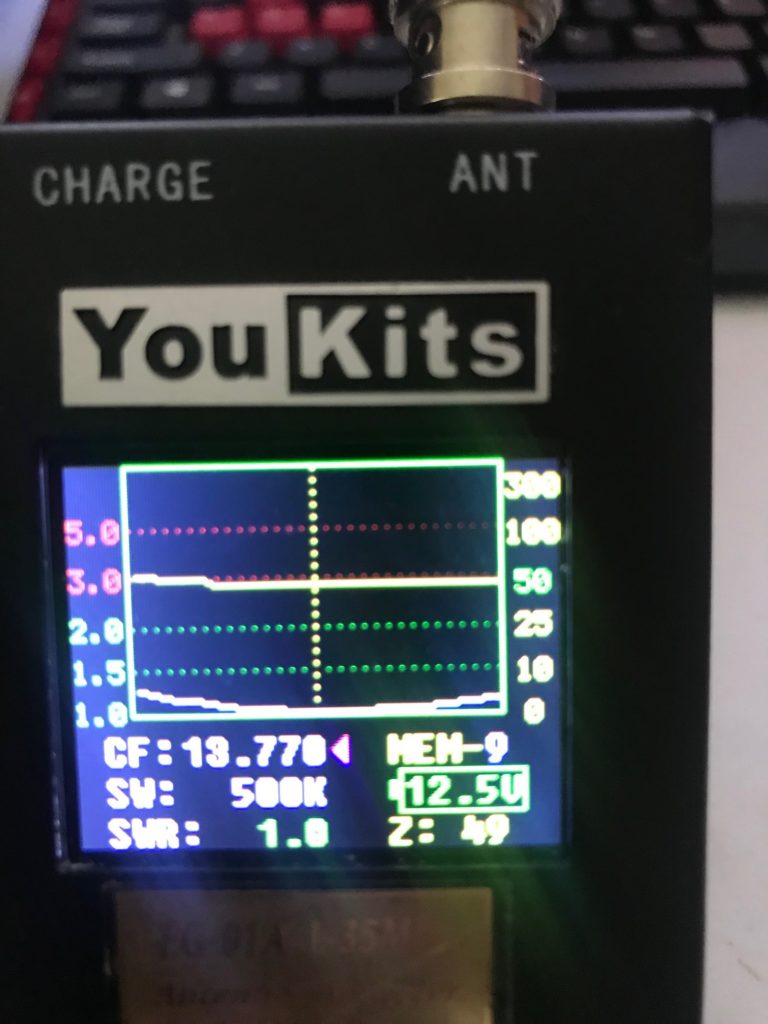

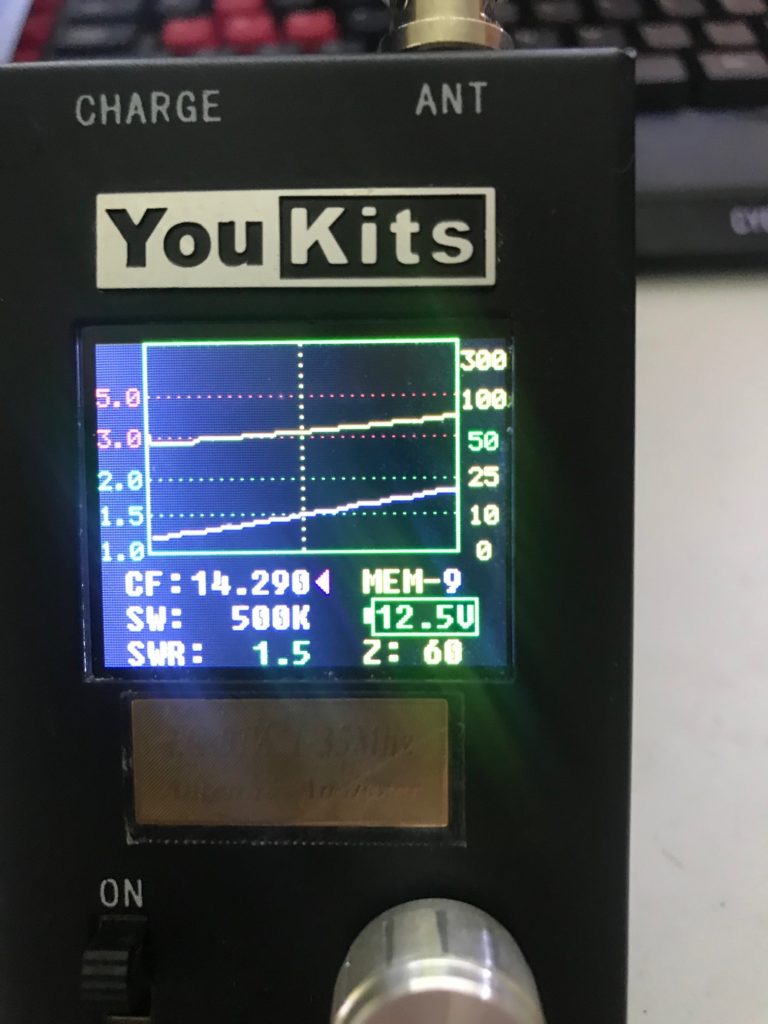
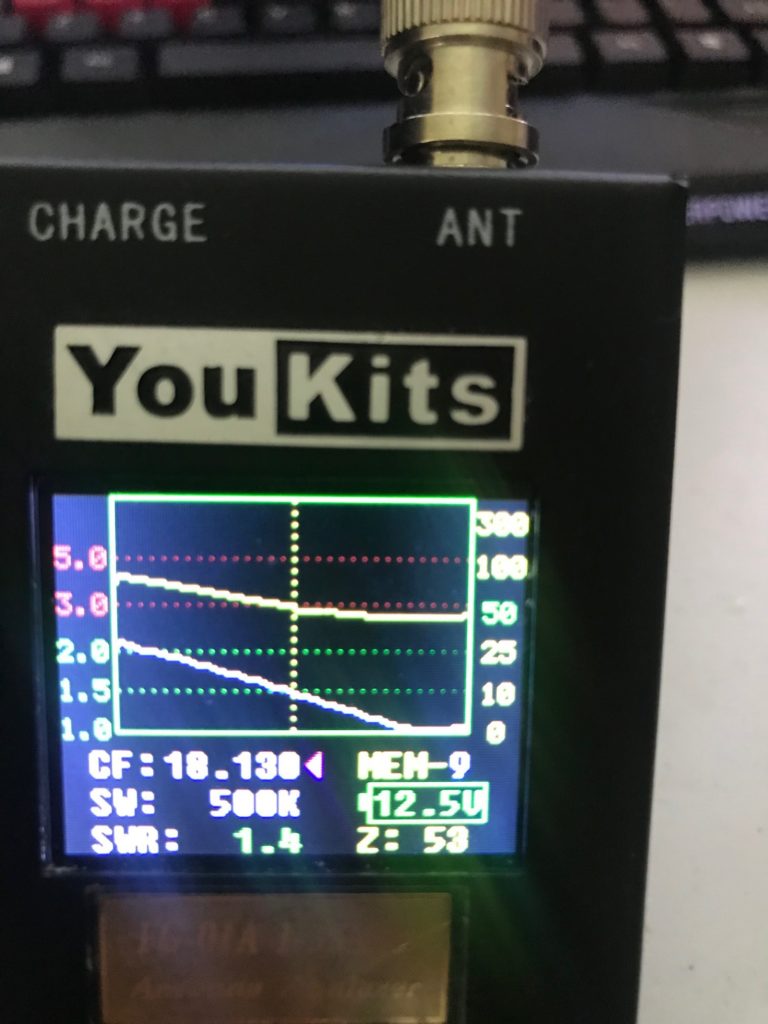

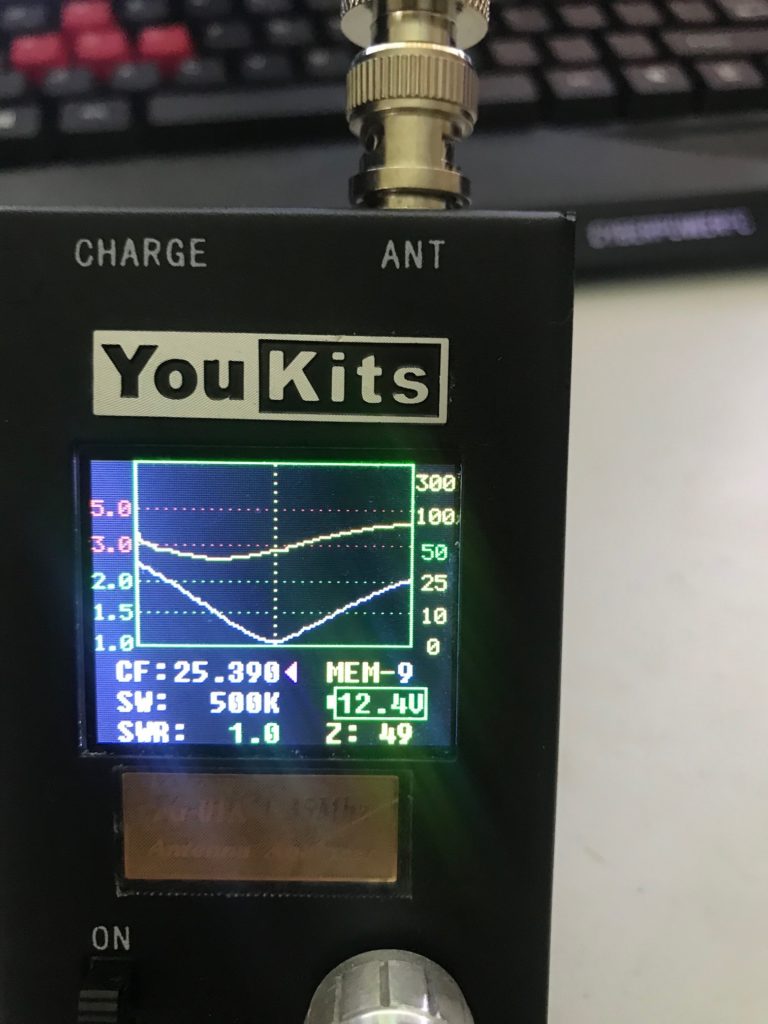


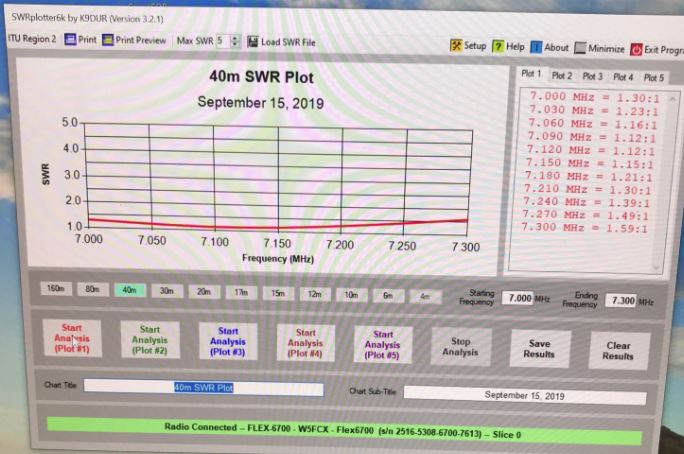
Recent Comments